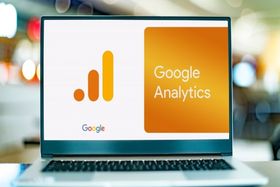Calculating Actual Cost in E-Commerce: Definition, Formula & Example
Updated November 28, 2022

Many e-commerce store owners rely on trend monitoring and estimates to forecast their business costs. The unfortunate reality is that this won't give you a true indication of the actual costs involved when it comes to work that has been performed. Why? Because you need to see the bigger picture so that you don't lose out on important business insights.
Actual Cost
Your "Actual Cost" is the actual amount of money you spent to purchase an asset or assets. It's made up of the total of the supplier-invoiced expense, plus other direct and indirect costs. In other words, it's the cost of an asset when it's first recorded as a fixed asset on your financial statements. Some examples in the context of an e-commerce store include:
- The total amount you spent on the delivery.
- The total amount it cost to set up.
- The cost of testing the asset.
Formula
Actual Cost =
(Direct Costs + Indirect Costs + Fixed Costs + Variable Costs + Sunk Costs)
Components
The following is an explanation of each component plus an e-commerce-related example:
- Direct Costs These are the costs included in directly manufacturing your product or service, or buying a wholesale product for reselling on your e-commerce store. Example: Let's say you resell shoes. The invoice you receive for the shoes you purchase from the wholesale outlet will be your direct costs.
- Indirect Costs Indirect costs extend beyond the expenses you incur when you "create" a product. In other words, the costs incurred for running and maintaining your e-commerce store. Example: You're still a shoe reseller. Your indirect costs would include computer technology, delivery costs, storage costs, packaging costs, etc.
- Fixed Costs This includes all your business expenses that don't change based on sales or no sales. They are set expenses that you have committed to. Example: As a shoe reseller, your fixed costs would be rent, Wi-Fi, security, salaries and wages, etc.
- Variable Costs These costs vary depending on your e-commerce store's income, i.e., the costs increase as you sell more and decrease during quiet times. Example: As a shoe reseller, you would pay more for fuel to deliver packages during high sales times.
- Sunk Costs These are costs you paid for and there is no potential for recovery. In other words, you've committed resources to these costs. Example: As a shoe reseller, you purchase packaging that gets damaged in transit. Since you've spent the money (or committed to honoring the invoice) and your employees are responsible for the damage, these costs would be sunk costs.
Example
Let's continue with the shoe reseller example.
Actual Cost =
- Direct Costs: Your shipment of shoes that you received from your wholesaler amounted to $2,000.
- Indirect Costs: Your computer technology, delivery costs, storage costs, and packaging costs came to a total of $1,000.
- Fixed Costs: Your rent, Wi-Fi, security, and salaries and wages came to a total of $2,000.
- Variable Costs: Since you had a very successful Black Friday, selling out on the shoes you had on sale, your variable costs amounted to $1,000.
- Sunk Costs: In the mayhem of selling out your Black Friday stock, you ended up with sunk costs of $200 for packaging damaged by your employees in an unfortunate accident in your storage facility.
The calculation would look as follows:
Actual Cost =
($2000 + $1000 + $2000 + $1000 + $200)
= $6200
As you can see, the formula is quite easy to use. The challenge lies in listing all your expenses to make sure you have included everything, then categorizing them to make sure each expense fits into the correct category for future use.
Conclusion
Knowing what your Actual Cost is in e-commerce will provide you with a bigger and more accurate view of your business, allowing you to conduct more in-depth analysis and take appropriate action.
If you still feel like this formula and its related costs are too complex to compute, there is light at the end of the tunnel. BeProfit's profit calculator app can make calculating actual costs easy and uncomplicated by letting you customize your dashboard and tracking all the costs associated with actual cost.
» Curious about BeProfit's app? Book a demo







